So, does it snow in Montana? If you’re dreaming of a winter escape wrapped in a blanket of snow, the Treasure State’s frosty landscapes offer a breathtaking backdrop for your chilliest fantasies.
Montana’s mountains and valleys don’t just flirt with the snow; they embrace it, creating a paradise for snow lovers.
Montana’s snowy season is as varied as the state’s stunning landscapes, and it’s crucial to know when and where to find the best snow. So, are you ready to unravel the secrets of Montana’s winter wonderland and discover the perfect time for your snowy adventure?
- Related article: Winter in Montana
Let’s embark on this frosty journey together. Keep reading to uncover the best times to experience the magic of Montana’s winter, the places where snowfall is at its most enchanting, and why this state’s snowy season is a must-see for anyone who loves the colder months.
7 Key Takeaways on Snow in Montana
- Montana’s snow season typically begins in November and lasts into April, with peak snowfall between December and February.
- Winter sports enthusiasts should plan their visit during the peak snow months for the best skiing and snowboarding conditions.
- Montana winters can be bone-chilling, so dress in layers and come prepared with winter gear.
- Snow can make driving challenging, so check road conditions and be prepared with snow tires or chains.
- Winter is a great time for wildlife viewing, but remember to keep a safe distance and respect their habitat.
- After a day in the snow, cozy up in one of Montana’s charming lodges or cabins.
- Montana’s snowfall can vary from heavy in the western regions to occasional in the east, with mountain ranges offering the most snow.
Snow in Montana
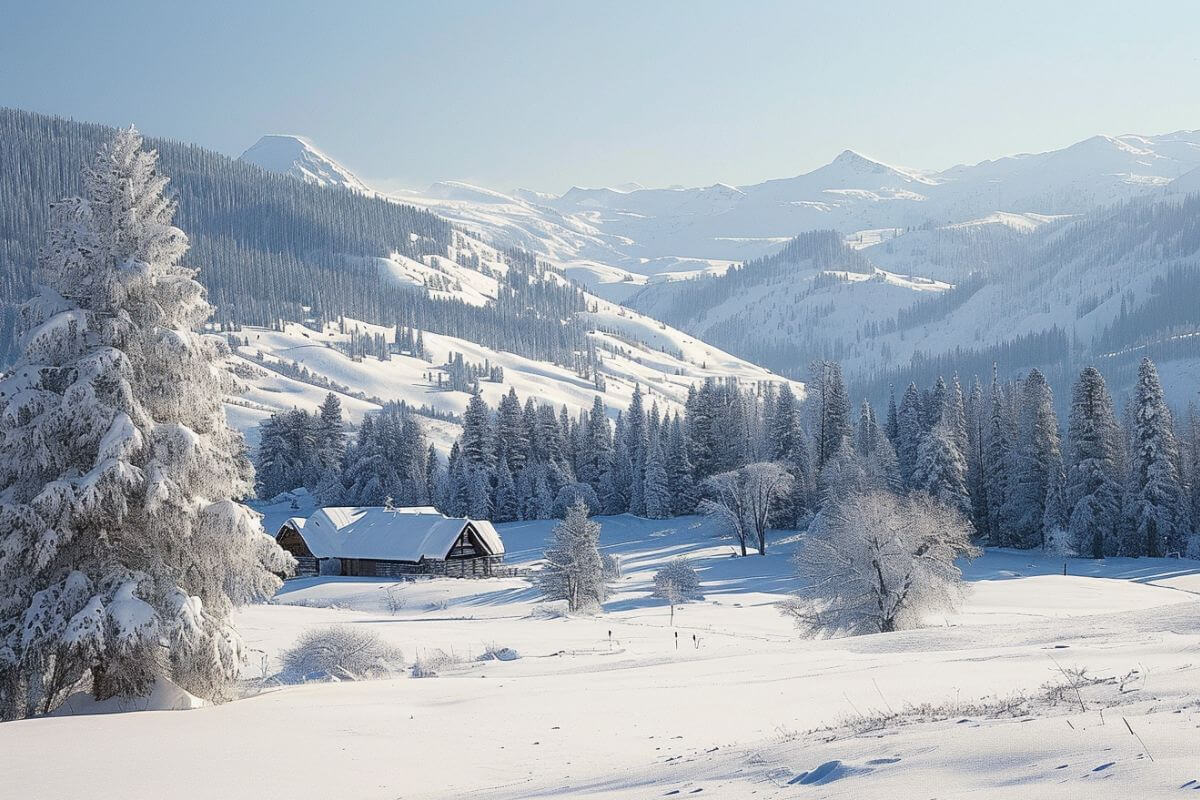
Montana’s snowy landscapes are the stuff of winter dreams. But when exactly should you plan your frosty getaway? Let’s explore the timing and expectations for snowfall in the Treasure State, so you can make the most of your winter adventures.
When Does Snow Start in Montana?
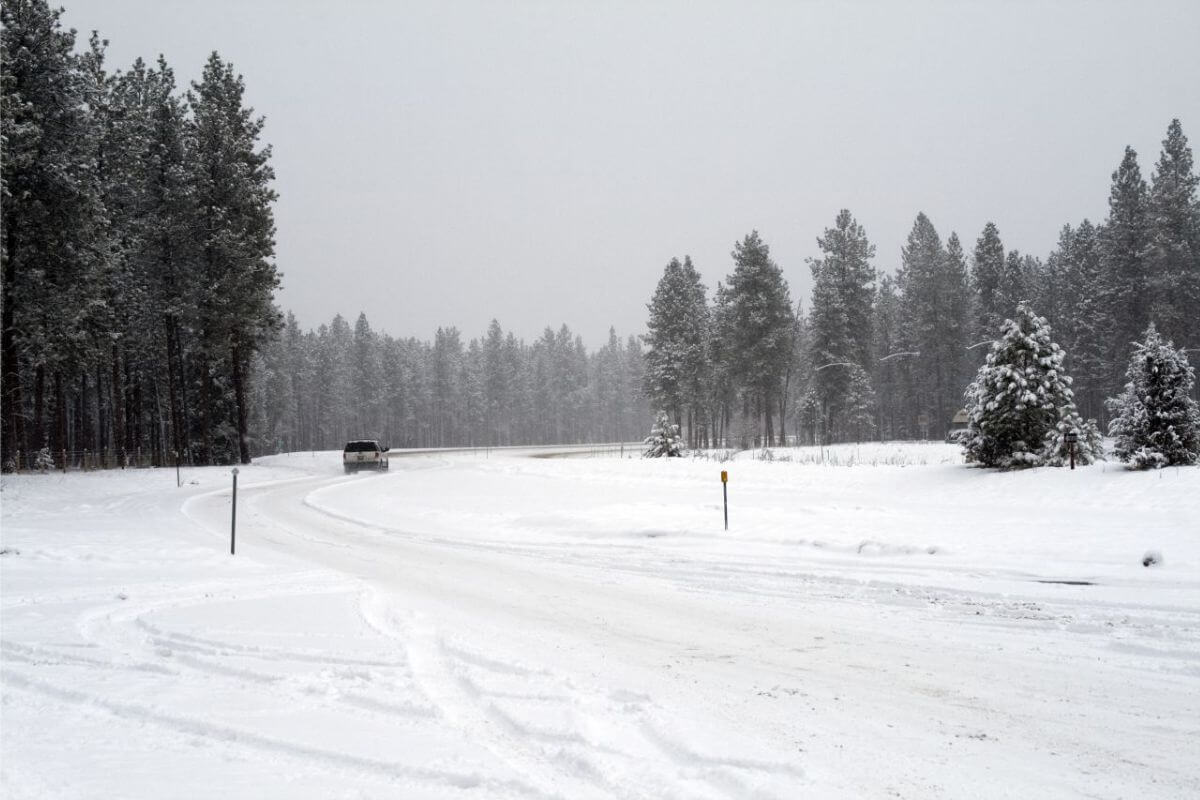
Montana’s snow season is as diverse as its landscapes, but here’s a general timeline to help you plan your winter adventures:
- September – The first snowflakes often grace Montana’s higher mountain elevations before fall officially begins. It’s a gentle reminder that winter is on the horizon.
- November – As the vibrant colors of fall paint the state, snowfall becomes more regular. You’ll witness a beautiful blend of autumn hues and winter’s first brushstrokes.
- December – Get ready for the heavy stuff. On average, Montana receives 9.6 inches of snow in December, making it the snowiest month. Whether you’re skiing or sipping hot cocoa by the fire, December offers a winter wonderland.
- January to March – These months are peak winter, with consistent snowfall amounts. It’s the ideal time for all winter activities, from snowmobiling to ice fishing.
- April – While lighter snowfalls are not uncommon in April, they typically signal the transition to spring. You might find yourself building a snowman one day and tossing a frisbee the next.
Snowfall becomes lighter and less frequent as spring progresses. It’s a magical time to visit, as you can still enjoy some winter sports while witnessing the state’s rebirth.
Thanks to Montana’s lofty elevations, you can find snow almost all year round in some areas. If you’re a snow enthusiast, you’ll never run out of options.
Montana offers a snowy playground for a significant portion of the year. Just remember to check the weather forecast, pack your warmest gear, and get ready to make some snow angels.
How Much Snow Can You Expect in Montana?
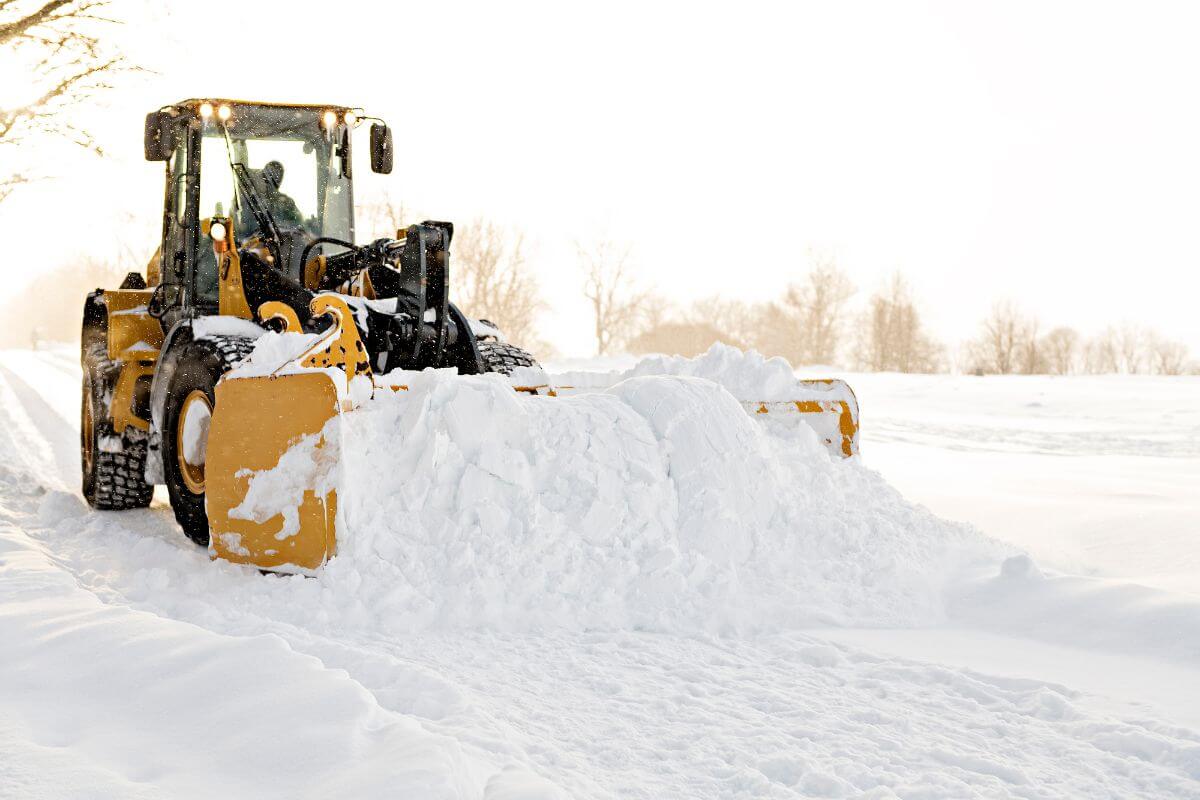
Montana’s snowfall is as diverse as its landscapes, with everything from heavy snowfall in the west to occasional deep snow in the east.
The state’s average annual snowfall of 49 inches is higher than most in the U.S., making it a winter wonderland for snow enthusiasts. But how does it all break down?
- Eastern vs. Western Montana – Temperature differences contribute to varied snowfall in Montana. Shielded by the Continental Divide, Western Montana receives more snow, while Eastern Montana contends with both deep snow and persistent blowing snow.
- Mountain Ranges – If you’re a fan of packed snow depths, head to Montana’s mountain ranges. The average snowfall in high-altitude areas can reach heights of nearly 300 inches, providing ample opportunities for skiing, snowboarding, and snowshoeing.
- Lower Elevations – While the mountains get the lion’s share, lower valley locations in western Montana usually stay within the 50-70 inches range. It’s still a substantial amount, but not quite as intense as the higher altitudes.
- Seasonal Patterns – Snowfall is frequent in the winter months, especially at higher altitudes. However, lower elevations may not see as much of it. So, if you’re planning a winter getaway, consider the altitude and the region to ensure you’re in the right spot for your desired level of snow.
The variability in snowfall from year to year is a testament to Montana’s ever-changing weather patterns. Whether you’re a fan of deep powder or prefer to keep your snow experiences more on the moderate side, Montana’s got you covered.
Which Places in Montana Receive the Most Snow?
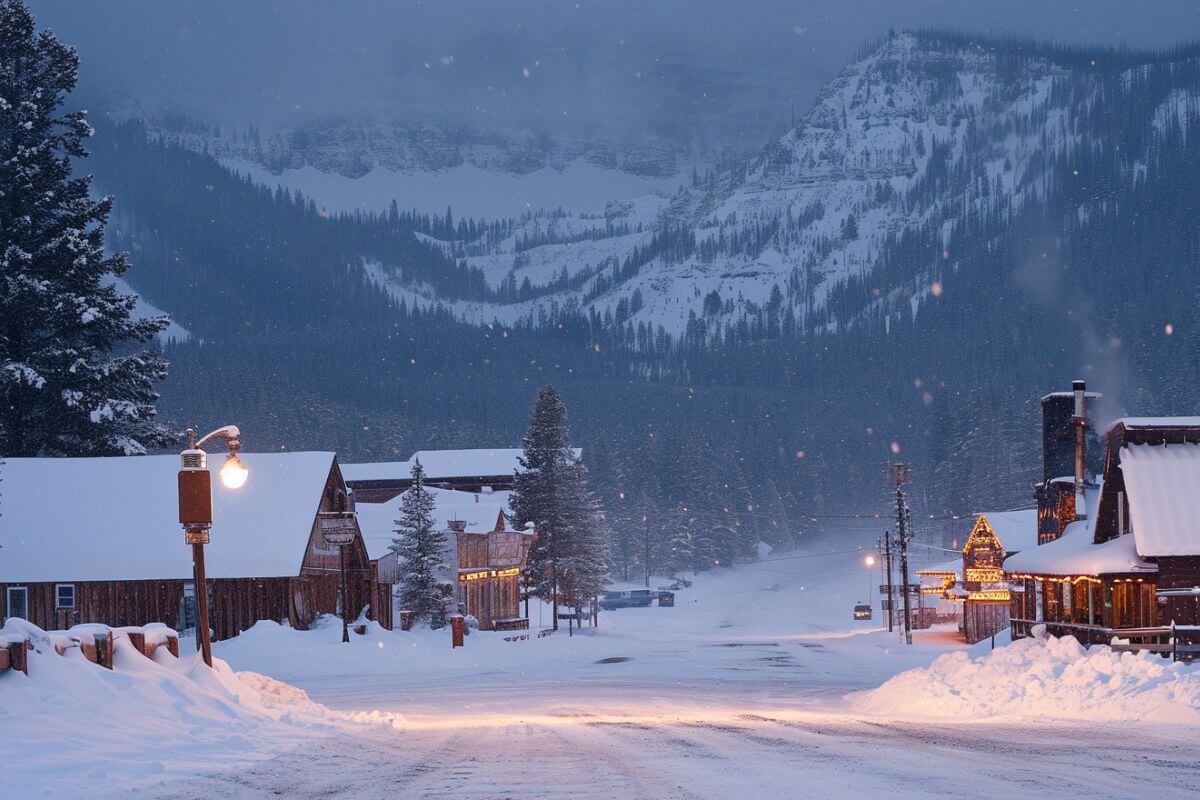
When it comes to winter wonderlands, Montana’s center and western regions take the cake.
Nestled in the Northern Rocky Mountains, these areas boast higher elevations and colder temperatures, resulting in generous amounts of snowfall. On the flip side, the eastern portion of the state aligns with its northern counterparts, receiving a more modest 20 inches of snow per year.
But for high-elevation valleys and plateaus like West Yellowstone and Cooke City, substantially more snow can be expected. Cooke City, which serves as one of the entrances to Yellowstone National Park, takes the crown for the snowiest town in Montana.
According to data collected from 1991 to 2020 by the U.S. National Centers for Environmental Information, Cooke City receives an average of 213.1 inches of snow each year, with snow covering the ground for around 90.8 days.
If you’re a fan of inches of snowfall and dreamy landscapes, here are a few snowiest towns in Montana you should know about:
| Place | Days of Snow | Inches of Snowfall |
| Cooke City | 90.8 | 213.1″ (541.3 cm) |
| Hebgen Lake Dam | 51.2 | 177.2″ (450.1 cm) |
| Red Lodge | 39.4 | 141.9″ (360.4 cm) |
| Bozeman | 54.1 | 91.3″ (231.9 cm) |
| Great Falls | 45.3 | 66.1″ (167.9 cm) |
| Whitefish | 35.1 | 63.1″ (160.3 cm) |
| Kalispell | 41.4 | 54.4″ (138.2 cm) |
These places offer the perfect setting for some serious snowball fights. Just make sure to follow our Montana winter clothing guide to keep yourself warm and cozy.
Snow in Montana Final Thoughts
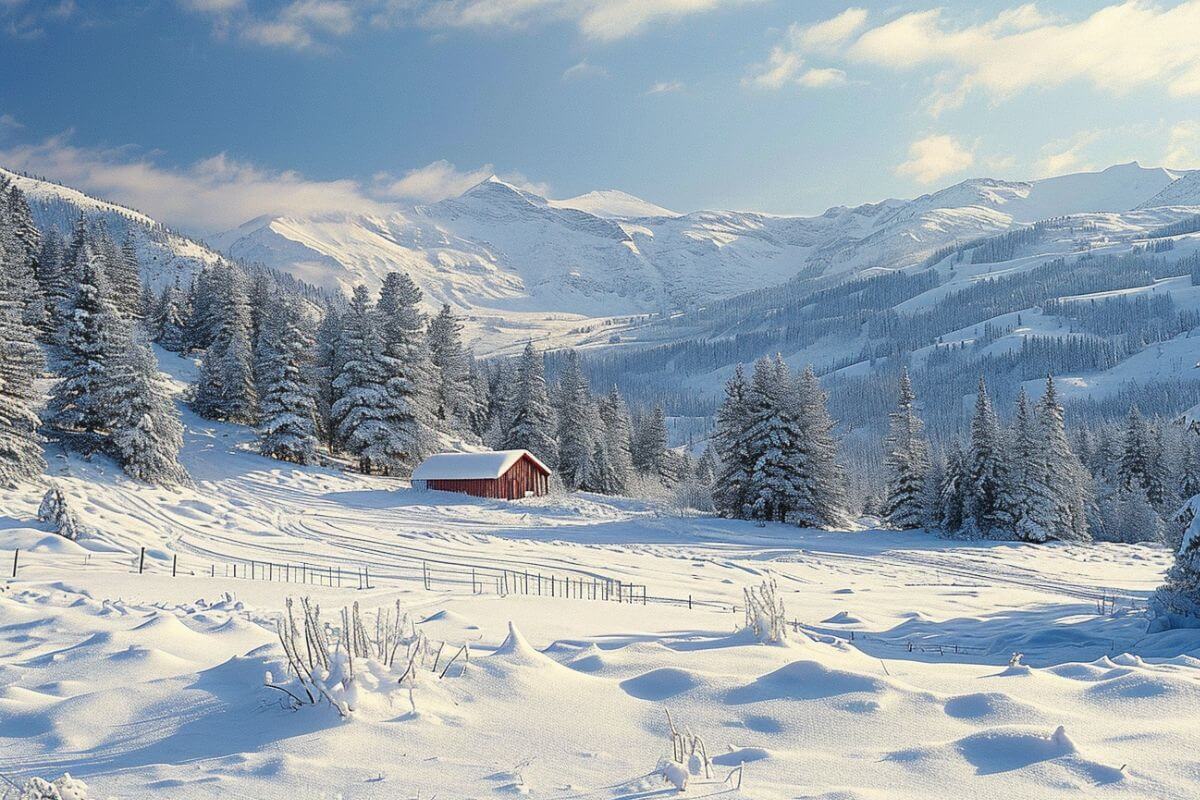
Montana’s winter is a transformative wonder, turning its landscapes into stunning snowy vistas that span from Glacier National Park to picturesque towns. The snow arrives as early as September, coating higher elevations with wintry scenes that last until April in some areas.
The diverse snowfall across the state ranges from 54 inches to over 200 inches in locales like Cooke City, playing a crucial role in shaping Montana’s identity through deep snowpacks and picturesque landscapes.
The varying degrees of snowfall experienced across the state, from heavy snow in the western mountains to occasional flurries in the eastern plains, add to Montana’s unique winter character.
The range of experiences offered during Montana’s winter, from ample snow for skiing to the serene beauty of lightly dusted valleys, defines the state’s seasonal charm and its diverse winter attractions.
If you’re looking for a winter wonderland, Montana delivers a mix of outdoor adventures and tranquil scenes that will leave you in awe.
Snow in Montana FAQs
1. What Is the Coldest Month in Montana?
The coldest month in Montana varies by region, but typically January is the coldest month statewide. Temperature and weather patterns can fluctuate depending on the specific location within the state.
2. What Are Winters Like in Montana?
When it comes to winters in Montana, they are cold and snowy due to the vast valleys, huge mountains, and proximity to Canada. The abundance of snowfall makes for a picturesque winter wonderland, perfect for skiing, snowboarding, and other winter activities.
3. Does Montana Have Harsh Winters?
Montana winters can be quite extreme, with heavy snowfall and frigid temperatures that can challenge even the most adventurous travelers. Be prepared for unpredictable weather and always check road conditions before hitting the open road.
4. Are Montana Winters Long?
Montana experiences long winters, usually from November to February, lasting 3.4 months. The snow and cold can be both beautiful and brutal, creating a unique experience for those who visit. You’ll want to pack plenty of layers and be prepared for some stunning winter landscapes.
5. Does Montana Ever Get Warm?
Yes, Montana experiences warm temperatures during the summer months, typically from July to early September, with average highs in the 80s°F (around 27°C) and occasional heat waves, temperatures in the low 100s°F (around 38°C) are very rare but possible.
Did you find this article interesting? Don’t miss other exciting Montana reads:

